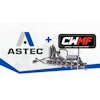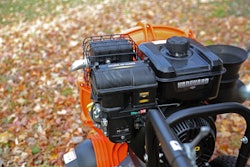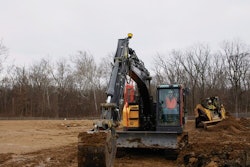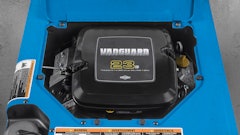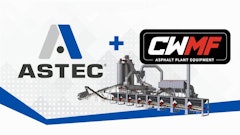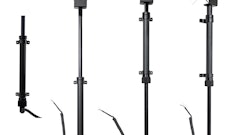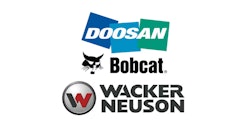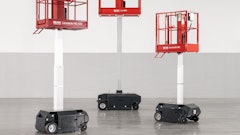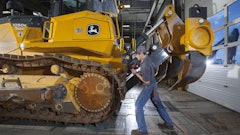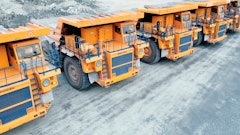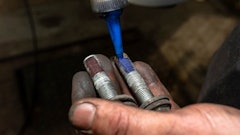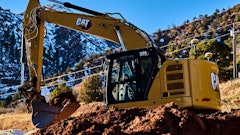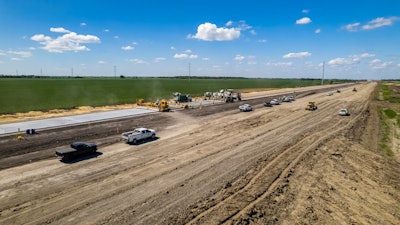
No matter the sport, grabbing a seat to experience it live in an arena, stadium or ballpark etches a deeper appreciation and understanding of the game. Watching our favorite team, we discover more nuances of their plays — a quarterback reduces their time to throw, or a defensive back notices a slight cue from the offensive line to stop a play in motion. Similarly, contractors and equipment or project managers regularly visit their jobsites to monitor their progress. We in the industry know jobsite visits are — and will continue to be — one of the best ways to keep projects on track. But when contractors integrate a centralized fleet management system (FMS) for their entire project, machine monitoring and automated data collection essentially multiplies contractors’ seat view from one to several vantage points. While teams usually wear the same color on the field, many contractors’ jobsites have machines in different colors — and from different manufacturers — to get the job done.
Many FMS, like John Deere Operations Center, monitor machine data and track performance through an open systems concept. Around about 2020, the WIRTGEN GROUP and John Deere adopted digital solutions and data management concepts that value:
- centralized fleet management
- open interfaces for data sharing when applicable
- interoperability with machines from other manufacturers
Like the coaches who partner with assistant coaches, managers and a facility’s videographers, an FMS developed from an open system concept helps contractors to record their jobsite plays and save these important datasets. When equipment or project managers segment these datasets for specialized teams to review at a later date — like a chief estimator looking at a paver’s idle time reports within the Operations Center — they are considering the project not only from the end zone, but also from the 50-yard line. From a road construction site, let’s review how machine monitoring software, datasets and GPS tracking can increase machine efficiency without the increased risk of downtime.
Machine Data Sets Add ‘Stadium Seats’
Contractors partnering with Department of Transportation (DOT) officials are finding that sharing machine performance data is like adding stadium seats to the jobsite — offering a higher vantage point and a clearer view of what’s really happening on the ground. With their preferred machine monitoring technology and an open-platform fleet management system, teams can capture detailed road conditions and surrounding context through point cloud data. This elevated perspective enables smarter modeling, more accurate cost forecasting, and real-time decision-making — key components of a total jobsite solution.
Inside a Total Site Monitoring Solution
Watch Hunter Harber, WIRTGEN GROUP's technology manager for telematics and diagnostics, explain how roadbuilders and other contractors use their Operations Center as their total site monitoring solution.
Some road construction sites are expected to offer DOT officials and other stakeholders machine data and project modeling in the near future. This way, the jobsite team and their customers can periodically view the construction game play as it progresses. While these real-time views for VIP ticket holders are only available for a small fraction of road builders, many other stakeholders already view machines’ performance data to adjust for better efficiency.
Key Machine Data Sets Take Center Field
Certain machines play pivotal roles on the jobsite, much like a tight end in football. In road rehabilitation, the milling machine is that versatile player, critical to setting the pace and progress of the project. This is why tracking the mill’s GPS location, idle times and quantities milled (removed) can offer valuable information.
“Tracking certain mill machine data points like idling times and quantities removed not only enables precise documentation of the actual performance but also offers valuable benefits in terms of efficient jobsite management,” said Daniel Robertson, machine control expert with nearly 20 years of experience at RDO.
Wirtgen milling machines, also known as cold milling machines, are specialized machines for removing the road’s base layer, typically asphalt or concrete. Wirtgen milling machines use a rotating drum with cutting teeth to grind away the existing pavement, and then this milled material can be recycled at a very high rate. In the United States, about 93% of Reclaimed Asphalt Pavement (RAP) is reused in new asphalt layers, according to the National Asphalt Pavement Association (NAPA). To track milled material, milling machines come equipped with a Wirtgen performance tracking system like the Operations Center.
Operators can access real-time performance data like fuel usage, working speed, the material being milled and its GPS location from a mill’s control unit screen. Team members not currently behind the wheel can access this info from the Operations Center and view automated PDF or Excel reports of total milled area, material volume processed, and the mill's distance covered over a specific period.
Robertson shared that an Arizonan contractor used some of these capabilities to enable quick, simple and transparent billing for their milling projects. The Operations Center can also be used to track teeth replacement for the milling machine and help contractors accurately estimate the machine maintenance costs for certain distances covered.
Cody Wagner, RDO paving technology product manager who spent years as a quality control official in Minnesota and Colorado, shares how Topcon Positioning Systems’ latest RD-M2 Road Surface Scanner can be used to quickly create a digital survey of the mill’s progress.
“The mill’s effectiveness depends heavily on the density of the material being removed,” Wagner said. “Contractors who use a road scanner that operates at highway speeds, like the RD-M2, can track the quantities being removed and then the ‘millings’, the material created from the milling process.”
Wagner said that this material data tracking on milling machines can not only provide valuable insight into a road resurfacing project this summer, but also for future projects, as materials with similar densities could require similar fuel or replacement parts or create nearly the same number of recyclable materials.
With this data, contractors can coach their crews more effectively and collaborate with stakeholders to estimate the effort, cost and time required to mill a road base layer,” Wagner said.
Sit in the Away Team’s Section, eTicketing Plus GPS Data
At times, fleet managers can integrate with DOT’s eTicketing system to see machines working together. More than five years ago, Minnesota’s DOT adopted an eTicketing system to track asphalt loads, time to deliver, and tonnage. Before 2020, plant-mixed asphalt was tracked by paper tickets that listed the asphalt's weight and its confirmation of payment from the contractor. The paper ticket, along with its important data points, could easily be misplaced, proving costly to the project.
“Minnesota DOT's implementation of the eTicketing allows asphalt transportation machines to be digitally weighed and tracked from the plant to its delivery location,” Wagner said. “Using GPS and machine monitoring, operators were able to share vital asphalt ticketing information with stakeholders through the use of geofences without delaying the project.”
Besides the labor and time savings, jobsites using the eTicketing systems were able to tap into some pavers’ open systems to keep their mix full and decrease the likelihood of grade changes.
“When a paver's load is low, it begins to cool down and decrease its compaction force,” Wagner said. “Machine monitoring solutions like VÖGELE’s WITOS Paving and Smart Pave systems record and automate the tracking of a paver’s GPS location and its asphalt material consumption.”
Robertson and Wagner explain VÖGELE pavers are equipped with independent feeder controls and digital displays. DOT’s eTicketing system and machine monitoring technology work together to track data points to get operators in their peak paving zone. Here’s how it can work:
- A paver's monitoring system like WITOS Paving will receive info like mix type, quantity, time at loading and Truck ID after a truck operator scans an eTicket's QR code.
- Once in the WITOS system, a paver logs its GPS location and timestamps it.
- As the truck is in transport, a paver’s sensors on conveyor belts and augers measure the flow of asphalt mix in the hopper and send data to the machine's control unit.
- If the mix drops below a certain threshold, a warning pops up on the paver control unit screen and the operator can notify the truck driver or project foreman.
These systems working together allow consistent material mix flow as each operator, the paver and truck operators know their real-time locations so they can proactively coordinate deliveries. Other pavers from different manufacturers can still work with John Deere Operations Center and DOT's eTicketing through a StarFire RTK and Smart Pave system, a custom API or a semi-automated workflow. A trusted equipment technology dealer like RDO should be able to discuss specific options with contractors depending on their machine and FMS.
This summer, contractors are looking to expand their FMS and geofence system to track more vehicles — other than the trucks delivering asphalt — to check if machines travel the most efficient route and adjust as the road is completed and traffic changes.
Review Data’s ‘Game Film’
With the amount of data collected through automated machine monitoring and open system FMS, contractors and operators can review a project’s game film to understand machine performance. We all know a smooth road is safer and requires less maintenance during the time a contractor is responsible for upkeep. During less busy times of the year, a team could come together to review machine performance and previous environmental conditions like weather to understand reasons why changes in slopes or densities occurred. Teams that win the World Series or the Super Bowl do so in part because they’ve reviewed the game’s film endlessly. Applying the same concept to road building, machine data or control solutions can reveal trick plays that enable contractors to stand at the project’s finish line with a trophy-worthy road.


